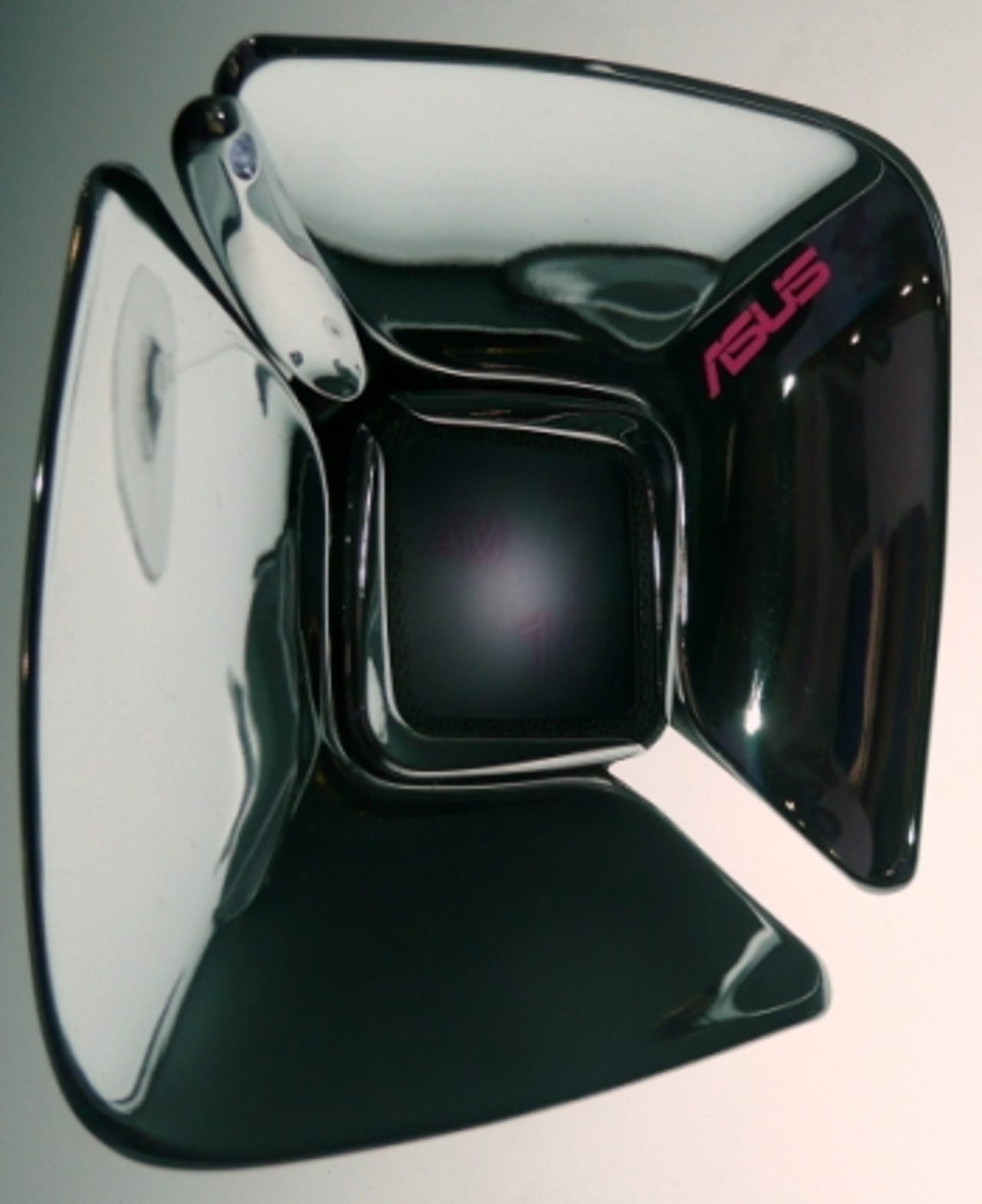Photos: Asus screen tech and latest tablet line-up


CeBIT 2011 picture round-up of the PC maker's experimental screens and slates...
PC maker Asus is at CeBIT 2011 showing off a stretchable transparent screen that could serve as anything from an alarm clock to a mobile phone to a tablet computer.
The picture shows the Iris - Inspirational Research for Immersive Space - concept device as an alarm clock, seen here connected to a model of a petal-shaped 3D panoramic projector that would beam holograms of tweeting birds above the bed when it is time to wake up.
The alarm would be silenced by a wave of the hand, detected via gesture recognition, prompting the projector to beam onto the ceiling the day's weather and a summary of info such as unread emails, missed calls or Facebook messages.
The Iris device's computing power would be provided via cloud computing, with the screen wirelessly tapping into the processing power of a server via the internet.
Photo: Nick Heath/silicon.com
The Iris device could be removed from the projector and placed on a wristband to function as a watch, as seen here.
The user of the Iris device could change it from a watch to a mobile phone by stretching the screen into the dimensions of a mobile phone keypad, as seen here.
The screen could be pulled out further to allow the device to function as a web browser, as seen here, or a portable media player.
The Iris device could output its screen wirelessly to large displays or dock with a 3D projector, the tube seen here.
Iris users could also sync their devices so multiple people could edit the same document or photo.
Here is how the Iris device could be used to run a card game.
Asus suggests users of the device could get together and play games using the touchscreen as a controller.
In a hypothetical scenario put forward by Asus, three friends play a game of cards by syncing their screen to a 3D projector that beams the card game into space in front of them.
Each friend has a deck of available cards on their Iris screen and is able to play a card by swiping their finger across the card towards the 3D projection of the game.
Asus has posted on YouTube its vision of how the Iris device could be used.
Liwei Hung, a member of the Asus Design team that devised the Iris concept, told silicon.com that the company's concept devices are unlikely to become final products but they influence the design of future commercial machines.
Asus also showed off four new touchscreen tablet PCs at CeBIT, ranging from the Asus Eee Slate EP121 to the hybrid tablet-laptop device, the Asus Eee Pad Slider.
The Asus Eee Pad Transformer is a tablet PC that can dock with a keyboard to become a laptop.
The device is based on the Google Android Honeycomb OS and has a 10.1-inch touchscreen with a resolution of 1,200 x 800 pixels and the ability to play HD video, thanks to an Nvidia Tegra 2 chipset.
Once linked to the optional keyboard docking station, the Transformer has a battery life of 16 hours.
Video chat is possible using the front 1.2-megapixel and rear five-megapixel cameras. The device has up to 64GB of flash storage, wi-fi and optional 3G connectivity, plus a mini HDMI port to connect to external displays.
The Transformer is due to be released in the UK in April this year.
The Asus Eee Pad Slider, a tablet PC based on the Google Android Honeycomb OS, comes with a slide-out keyboard.
Like the Asus Eee Pad Transformer, the Eee Pad Slider has a 10.1-inch touchscreen and a resolution of 1,200 x 800 pixels, and can play HD video using its Nvidia Tegra 2 chipset.
Also like the Transformer, the Slider has a front 1.2-megapixel and rear five-megapixel camera for video chat, wi-fi and optional 3G connectivity, up to 32GB of flash storage and a mini HDMI port.
The Slider is due to be released in the UK in May.
The Asus Eee Pad MeMO is a seven-inch touchscreen tablet that runs the Google Android Honeycomb OS.
The tablet screen has a resolution of 1,024 x 600 pixels and is capable of HD video playback using its Qualcomm Snapdragon processor.
The MeMO comes with a stylus that allows users to make notes on the tablet, and built-in GPS that turns the slate into a navigation device.
Front 1.2-megapixel and rear five-megapixel cameras enable video chat and digital photography. The tablet has built-in GSM, HSPA+ and wi-fi connectivity, up to 64GB of flash storage and a micro HDMI port.
The MeMO is due to be released in June.
The Asus Eee Slate EP121 is a tablet PC running Windows 7 Premium edition and powered by an Intel Core i5 dual-core processor.
The 12.1-inch touchscreen display has a 1,280 x 800-pixel resolution and a 178-degree viewing angle.
Users can control the tablet with a stylus or their hand. There is also the choice of an on-screen virtual keyboard or a Bluetooth keyboard for desktop use.
The Slate is available with up to 64GB of SSD storage and up to 4GB of memory.
The device has a two-megapixel camera, two USB ports and a mini HDMI port for connecting to external displays.